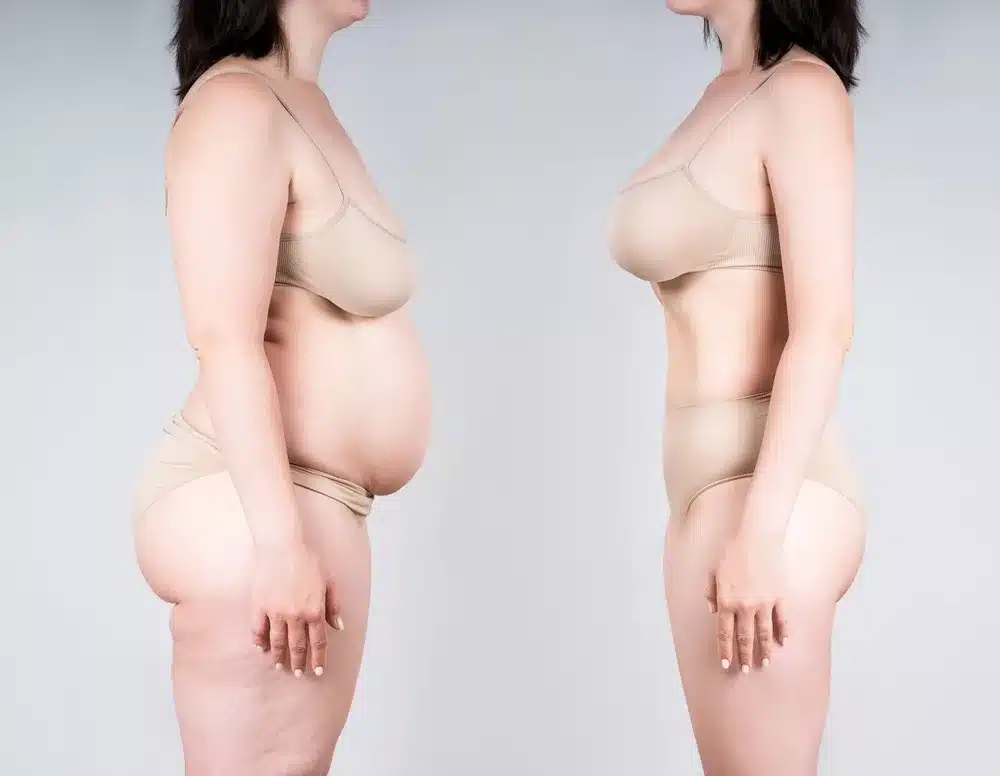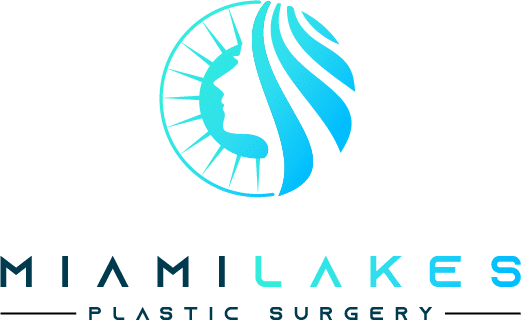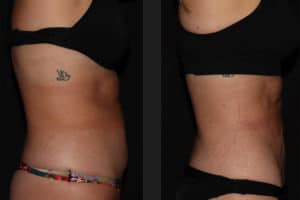Recovering from a mommy makeover surgery can be different for individuals who are already fit and have an active lifestyle. Mommy makeover recovery for fit person requires specific considerations to ensure optimal results. By incorporating targeted strategies and personalized care, fit individuals can enhance their healing process and achieve the desired transformation.

The Impact of Fitness on Recovery
Fitness can significantly influence the recovery process in several ways, including illness recovery, surgery recovery, and injury recovery. Here are a few key points:
- Faster Healing: Studies show that individuals who are physically fit often recover faster from injuries or surgeries. This is partly because regular exercise improves circulation, which can speed up the body’s natural healing processes. Additionally, exercise can help to strengthen the immune system, which can make the body more efficient at fighting off infections and diseases.
- Improved Mental Health: Exercise has been shown to have beneficial effects on mental health, reducing symptoms of depression and anxiety. This is important for recovery as maintaining a positive mental state can boost motivation and adherence to recovery protocols.
- Increased Strength and Flexibility: Fitness increases strength and flexibility, which can be beneficial in preventing further injuries and aiding recovery. For instance, strong muscles can provide better support for injured areas, while flexibility can help prevent the stiffness that often comes with prolonged periods of inactivity.
- Better Pain Management: Regular physical activity promotes the release of endorphins, the body’s natural painkillers. This can help individuals manage pain during the recovery process.
- Enhanced Cardiovascular Health: Regular exercise contributes to improved cardiovascular health, which can also aid recovery. A strong heart and efficient blood circulation can deliver nutrients and oxygen more effectively to injured tissues, accelerating healing.
- Improved Sleep: Exercise has been shown to promote better sleep quality, which is vital for recovery. During sleep, the body undergoes several restorative processes that are crucial for healing and recovery.
- Weight Management: Regular exercise can help to control weight, which is beneficial for recovery. Being overweight or obese can put additional stress on the body and slow down the healing process.
- Bone Health: Weight-bearing exercises can help improve bone density and strength. This can be particularly beneficial for individuals recovering from fractures or orthopedic surgeries.
- Boosts Self-esteem and Confidence: Being physically fit can boost self-esteem and confidence, which can be crucial in maintaining a positive attitude during recovery.
It’s important to note that while being fit can aid recovery, it’s crucial to follow healthcare providers’ guidance during the recovery process. Overdoing it or returning to normal activity levels too quickly can lead to setbacks and further injuries. Additionally, while fitness can aid in recovery, it doesn’t guarantee immunity from illnesses or injuries.

Faster Healing Times
Fitness and physical activity can contribute to faster healing times in several ways:
| Strategies for Faster Healing Times |
|---|
| 1. Proper Wound Care |
| 2. Balanced Diet |
| 3. Hydration |
| 4. Quit Smoking |
| 5. Manage Stress |
| 6. Physical Activity |
| 7. Follow Medical Advice |
| 8. Avoid Alcohol |
Each strategy represents a key approach to promoting faster healing. Remember to consult with a healthcare professional for personalized advice based on your specific situation.
Reduced Risk of Complications
When it comes to maintaining our health, one of the primary goals is reducing the risk of complications. This could apply to complications arising from lifestyle diseases, surgical procedures, or treatments for various medical conditions. But how can one accomplish this? Let’s delve into some effective strategies.
Adjusting Your Fitness Routine Post-Surgery
- Consult with Your Surgeon: Before resuming your fitness routine, it is crucial to consult with your surgeon. They will assess your healing progress and provide personalized recommendations based on your specific case.
- Start Slowly: Begin with light activities, such as short walks, to gradually reintroduce exercise into your routine. Listen to your body and increase the intensity and duration of your workouts gradually.
- Avoid High-Impact Exercises:In the early stages of your recovery, it is important to avoid high-impact exercises that can put strain on your healing incisions. These may include running, jumping, or intense aerobic exercises.
- Focus on Low-Impact Exercises: Engage in low-impact exercises that are gentle on your body, such as swimming, cycling, or yoga. These activities can help maintain your fitness level without jeopardizing your recovery.
- Incorporate Strength Training: As you progress in your recovery, consider incorporating light strength training exercises. Focus on targeting different muscle groups while avoiding exercises that put excessive strain on your abdominal area.
- Listen to Your Body: Pay close attention to any discomfort or pain during your workouts. If you experience any unusual symptoms or increased pain, stop exercising and consult with your surgeon immediately.
Initial Rest and Recovery
After undergoing a mommy makeover procedure, it is essential for fit individuals to prioritize rest and recovery. Even though their overall fitness levels may be higher, their bodies still require time to heal and adjust to the surgical changes. Here are some key considerations for the initial rest and recovery period:
| Key Points for Initial Rest and Recovery |
|---|
| 1. Follow post-operative instructions |
| 2. Arrange for support and assistance |
| 3. Prioritize adequate rest |
| 4. Manage discomfort |
| 5. Monitor and care for incisions |
| 6. Stay hydrated and eat nutritious meals |
| 7. Avoid strenuous activities |
| 8. Attend follow-up appointments |
Remember, these points are just a general guide, and it is important to follow your specific plastic surgeon’s instructions for a successful recovery.
Gradual Return to Exercise
Here is a table outlining the gradual return to exercise after a mommy makeover for fit individuals:
| Gradual Return to Exercise |
|---|
| 1. Consult with your surgeon |
| 2. Start with light activities |
| 3. Listen to your body |
| 4. Gradually increase intensity |
| 5. Avoid high-impact exercises |
| 6. Incorporate strength training |
| 7. Practice proper form and technique |
| 8. Stay consistent and patient |
Remember to consult with your surgeon before resuming any exercise regimen. They will provide specific guidelines based on your individual procedure and recovery progress.

Maintaining Muscle Mass During Recovery
or fit individuals undergoing a mommy makeover, maintaining muscle mass during the recovery process is an important consideration. While rest and healing are crucial, preserving muscle strength can help support overall recovery and promote a smooth transition back to regular physical activities. In this article, we will explore strategies to help fit individuals maintain muscle mass during their mommy makeover recovery.
- Consult with Your Surgeon: Before implementing any exercise regimen during recovery, it is essential to consult with your surgeon. They can provide personalized guidance based on your specific procedures, incisions, and overall health. Your surgeon will advise on when it is safe to begin exercising and recommend appropriate activities to preserve muscle mass while promoting healing.
- Focus on Non-Impact Exercises: During the initial stages of recovery, engage in non-impact exercises that target different muscle groups without placing excessive strain on the body. Low-impact activities such as resistance band exercises, light weightlifting, or bodyweight exercises can help maintain muscle strength without compromising the healing process. Ensure proper form and technique to avoid putting stress on the surgical areas.
- Incorporate Isometric Exercises: Isometric exercises involve contracting and holding specific muscle groups without joint movement. These exercises can be performed without placing strain on the incisions or surgical areas. Isometric exercises such as planks, wall sits, or static holds can help maintain muscle activation and strength during the recovery period.
- Gradually Increase Intensity: As you progress through your recovery, gradually increase the intensity of your exercises. This should be done in consultation with your surgeon to ensure that your body is ready for more challenging activities. Gradual progression helps prevent muscle atrophy and allows your body to adapt and recover without compromising the surgical results.
- Prioritize Balanced Nutrition: Maintaining muscle mass requires proper nutrition. Focus on consuming a well-balanced diet that includes an adequate amount of protein, healthy fats, and carbohydrates. Protein is particularly important for muscle repair and growth. Consult with a registered dietitian or nutritionist to ensure you are meeting your nutritional needs during the recovery period.
- Stay Hydrated: Hydration is often overlooked but plays a crucial role in muscle recovery and overall healing. Drink sufficient water throughout the day to support muscle function, tissue repair, and overall well-being. Proper hydration also helps maintain joint health and flexibility.
- Rest and Recovery: While it is important to maintain muscle mass, do not underestimate the importance of rest and recovery. Your body needs time to heal, and overexertion can hinder the recovery process. Ensure you get adequate sleep and incorporate rest days into your exercise routine to allow your muscles to recover and rebuild.
- Listen to Your Body: Pay close attention to how your body feels during the recovery process. If you experience pain, discomfort, or any unusual symptoms, stop exercising and consult with your surgeon. Pushing through pain can delay healing and potentially cause complications.
Nutrition for Optimal Healing
Proper nutrition plays a crucial role in supporting your body’s healing process after a mommy makeover procedure. By providing essential nutrients, you can promote tissue repair, reduce inflammation, and boost your overall recovery. Here are some dietary recommendations to optimize your healing:
Balanced Diet
Maintaining a balanced diet is fundamental for your body’s healing and well-being. Include a variety of nutrient-dense foods in your meals, such as:
- Proteins: Consume lean sources of protein like poultry, fish, tofu, and legumes. Protein is essential for tissue repair and helps strengthen your body during the recovery process.
- Fruits and Vegetables: Incorporate a colorful array of fruits and vegetables into your diet. These foods are rich in antioxidants, vitamins, and minerals, which support your immune system and aid in healing.
- Whole Grains: Opt for whole grains like brown rice, quinoa, and whole wheat bread. They provide fiber, B vitamins, and energy for your body’s healing processes.
- Healthy Fats: Include sources of healthy fats, such as avocados, nuts, seeds, and olive oil. These fats have anti-inflammatory properties and contribute to skin health.
- Hydration: Drink plenty of water throughout the day to stay adequately hydrated. Water helps transport nutrients, flush out toxins, and maintain overall cellular function.
Key Nutrients
Certain nutrients play a vital role in the healing process and should be prioritized during your recovery:
- Vitamin C: Found in citrus fruits, berries, broccoli, and bell peppers, vitamin C is essential for collagen synthesis, wound healing, and immune function.
- Vitamin A: Foods rich in vitamin A, like carrots, sweet potatoes, spinach, and kale, support cell growth, skin health, and immune function.
- Omega-3 Fatty Acids: Incorporate fatty fish (such as salmon and sardines), flaxseeds, chia seeds, and walnuts into your diet. Omega-3 fatty acids possess anti-inflammatory properties and contribute to skin health.
- Zinc: Include sources of zinc, such as lean meats, seafood, nuts, and seeds. Zinc supports wound healing, collagen formation, and immune function.
- Fiber: Consume fiber-rich foods like whole grains, fruits, vegetables, and legumes. Adequate fiber intake aids digestion and helps prevent constipation, which is beneficial during the recovery process.
Meal Planning Tips
To ensure you are meeting your nutritional needs during your mommy makeover recovery, consider the following tips:
- Preparation: Plan and prepare your meals in advance to ensure you have healthy options readily available. This will help you avoid relying on processed or fast foods.
- Smaller, Frequent Meals: Eating smaller, frequent meals throughout the day can help prevent nausea, promote digestion, and stabilize blood sugar levels.
- Supplements: Consult with your surgeon or a registered dietitian to determine if you need any specific supplements to support your recovery. They can assess your individual needs and recommend appropriate options.
- Listen to Your Body: Pay attention to how your body responds to different foods. If you notice any adverse reactions or discomfort, adjust your diet accordingly and consult with a healthcare professional if necessary.
By prioritizing a balanced diet, incorporating key nutrients, and following these meal planning tips, you can provide your body with the fuel it needs to optimize healing, support tissue repair, and enhance your overall mommy makeover recovery.
Remember, it’s essential to consult with a healthcare professional or registered dietitian for personalized dietary advice based on your specific needs and medical history.
Long-Term Fitness Goals Post-Mommy Makeover
After undergoing a mommy makeover procedure, it’s important to focus on long-term fitness goals to maintain the results and enhance your overall well-being. By incorporating regular exercise, adopting a healthy lifestyle, and setting achievable fitness targets, you can continue to prioritize your physical fitness and enjoy the benefits of your mommy makeover. Here are some guidelines to help you establish and achieve your long-term fitness goals:
Consultation with Your Plastic Surgeon
Before embarking on any fitness routine post-mommy makeover, consult with your plastic surgeon. They will evaluate your progress, assess your healing, and provide personalized recommendations based on your unique circumstances. It’s essential to ensure that your body has adequately healed before engaging in any strenuous physical activities.
Gradual Return to Exercise
Begin your fitness journey with gradual, low-impact exercises. This approach allows your body to adjust and regain strength while minimizing the risk of injury. Consider the following exercise options during your recovery:
- Walking: Start with short walks around your neighborhood or on a treadmill. Gradually increase the duration and intensity as you feel more comfortable.
- Low-Impact Aerobics: Engage in activities like swimming, cycling, or using an elliptical machine. These exercises provide cardiovascular benefits without placing excessive strain on your healing muscles and incisions.
- Strength Training: Incorporate light resistance exercises using bands or light weights to gradually rebuild muscle tone. Focus on the major muscle groups while maintaining proper form and avoiding direct stress on the treated areas.
Customized Exercise Plan
To ensure a safe and effective fitness routine post-mommy makeover, consider consulting with a qualified fitness professional, such as a personal trainer or physical therapist. They can design a customized exercise plan tailored to your specific needs, goals, and physical condition. This personalized approach will help you maximize your fitness potential while avoiding exercises that may interfere with your healing process.
Balanced and Nutritious Diet
Complement your exercise routine with a balanced and nutritious diet. Proper nutrition fuels your body, enhances recovery, and supports your fitness goals. Focus on consuming whole foods, including lean proteins, fruits, vegetables, whole grains, and healthy fats. Stay hydrated by drinking an adequate amount of water throughout the day.
Active Lifestyle
Incorporating physical activity into your daily routine is crucial for maintaining long-term fitness. Embrace an active lifestyle by integrating movement into your daily activities, such as taking the stairs instead of the elevator, walking or biking for short distances, or participating in recreational activities that you enjoy. These small changes can make a significant impact on your overall fitness level.
Setting Realistic Goals
When establishing long-term fitness goals, it’s important to set realistic and achievable targets. Be patient with yourself and remember that your body has undergone a transformation. Focus on gradual progress, rather than expecting immediate results. Celebrate milestones along the way and adjust your goals as you continue to grow stronger and more confident.
Mind-Body Connection
Nurture the mind-body connection by incorporating activities that promote relaxation, stress reduction, and mental well-being. Engage in practices like yoga, meditation, or deep breathing exercises. These activities can help alleviate stress, enhance mindfulness, and contribute to your overall sense of well-being.
Consistency and Accountability
Consistency is key to achieving long-term fitness goals. Create a schedule that allows for regular exercise sessions and commit to sticking to it. Consider finding an exercise buddy or joining fitness classes or groups to stay motivated and accountable. The support and camaraderie of others can make your fitness journey more enjoyable and sustainable.
Special offer! Mommy Makeover Miami for $6,000 at Miami Lakes. Book now!
References:
- Lynch, J., Dugan, M. M., & Salomon, J. (2017). Aesthetic Surgery and Google: Ubiquitous, Yet Unreliable. Aesthetic Surgery Journal, 37(1), 119-124.
- BrightLocal. (2016). Local Consumer Review Survey. Recuperado el 19 de septiembre, 2016, de https://www.brightlocal.com/learn/local-consumer-review-survey
- Moon Plastic Surgery Center. (n.d.). Mommy Makeover Miami. Retrieved July 21, 2023, from https://www.moonplasticsurgerycenter.com/mommy-makeover-miami/





